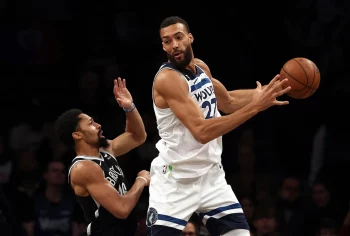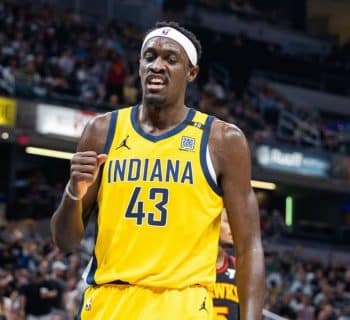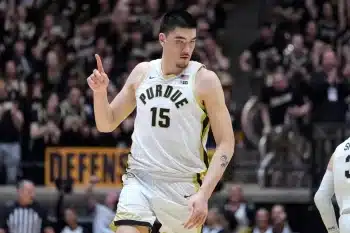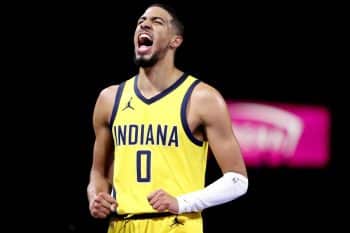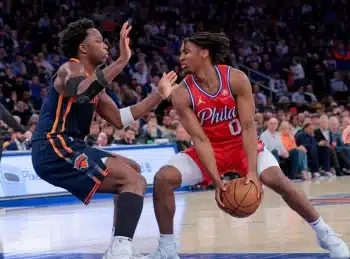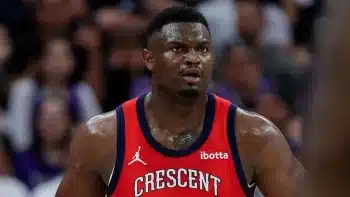NBA
NBA Daily: Aron Baynes’ Three-Point Revolution

Aron Baynes attempted a grand total of six three-pointers over his first five years in the NBA.
When he first ventured beyond the arc in 2017-18 — during his debut campaign with the Boston Celtics — Baynes’ newfound stretch seemed more like a novelty than a development that could significantly alter the course of his career. He took just 21 triples, but 13 of them came from the corners — a spot at which more and more players experimented with the long ball as the league’s emphasis on space reached a new zenith.
The evolution that initially pushed Baynes and other non-shooters like him to the perimeter is ongoing. Thirteen teams are taking at least 35 percent of their shots from deep, up from nine last season, while the number of teams with a three-point rate above 30 percent has jumped from 23 to 27, per Cleaning the Glass.
The NBA’s three-point revolution, obviously, is still in its heyday. But more frequently and easily identified with that reality is a player like James Harden — an annual MVP-worthy candidate — whose three-point rate has risen to a ridiculous 57.2 percent. Or, take Andrew Wiggins, who has revitalized his career by launching 6.7 triples per game – a number that would have ranked among the league’s the top-10 as recently as 2015-16, but currently sits outside its top-20.
Still, it would be foolish to overlook the influence of role players that continue pushing their personal boundaries as long-range shooters, a group for which Baynes has become the poster boy.
Any chance that the three-ball would be a more complementary aspect of his game as opposed to a driving force behind it vanished last season. Baynes shot a solid 34.4 percent from three-point range, just below league average and nearly double his accuracy from the previous season. But his shot chart hinted at even further growth to come as 50 of Baynes’ 61 three-point tries were from above the break. He wasn’t just a stationary safety valve to make opponents pay for ignoring him in the corner — but a shooter with numbers indicated that needed to be guarded all over the floor.
Baynes’ red-hot start to 2019-20 has ensured that defenses must treat him with the respect he deserves, and the Phoenix Suns are taking full advantage.
It’s safe to say Baynes won’t shoot 46.8 percent on three-pointers all season long. Danny Green and Joe Harris were the only players in basketball to connect on even 45 percent of those attempts last season, and it’s not like Baynes has been shy getting them up, allowing for the possibility of a small sample size to artificially inflate his numbers. He’s launching 4.3 triples in only 23.8 minutes per game, hunting them with the vigor of a veteran frontcourt marksman.
Baynes doesn’t care where he is, how quickly he needs to set his feet or how much time is on the shot clock. Only three of his long-range efforts last season came as a defender was within six feet of him. Less than a month into 2019-20, Baynes has doubled that total, even taking three shots from deep when being closely defended, per NBA.com.
He doesn’t just get his shots in pick-and-pop or scramble situations, either. The Suns believe so much in Baynes’ viability as a three-point shooter that they sometimes run a baseline out-of-bounds play to get him an open look from the wing.
Baynes has been one of the best screeners in basketball for years. He’s massively built with broad shoulders and a thick chest, thus allowing him to make contact with defenders trying to avoid a pick when most bigs couldn’t. His keen understanding of angles and timing regularly provides unencumbered runways for ball handlers that otherwise wouldn’t exist.
Even so, Baynes is far more dynamic as a screener now that he’s an imminently-dangerous three-point shooter. He mixes in a steady diet of dives to the rim with more frequent pops to the arc, and Phoenix ball handlers have increasingly made a habit out of drawing two defenders by creasing the paint, only to kick back out to Baynes for an open triple. The result is Baynes averaging 1.56 points per possession as a roll man, fourth-best in the league, on the strength a 77.8 effective field goal percentage, per NBA.com.
Monty Williams hasn’t just empowered Baynes as a three-point shooter, either. The Suns’ head coach consistently takes advantage of the mere threat of Baynes’ presence, too, producing easy scoring opportunities elsewhere on the floor. Phoenix loves clearing the lane for quick Booker post-ups at the charge circle against overmatched defenders and Baynes, an underrated passer, routinely finds others with backdoor dimes when the defense overplays dribble hand-offs.
The Los Angeles Lakers, sporting the league’s best defense, were eventually so spooked last week by Baynes, Dario Saric and Frank Kaminsky raining threes that they resorted to switching across five positions. While Los Angeles hung on for a hard-fought win in a delightfully hostile environment, it still speaks volumes about the Suns’ offensive attack that a defense led by LeBron James and Anthony Davis felt the need to junk-up its scheme.
Baynes isn’t a high-usage post player and never will be. But when defenses feel compelled to switch to combat the long-range shooting of he and other bigs, the Suns should remember that he was able to exploit James on the block with ease.
Baynes is no star, even if there’s data suggesting otherwise. Phoenix’s offensive rating is almost 15 points better with him on the court, but that number aligns closely with that of other starters. His presence makes almost no affect on the Suns’ team-wide shot chart, either. But any sweet-shooting, screen-setting, backdoor-passing big man would be an abject offensive plus, and it’s telling that Phoenix’s effective field goal percentage ticks up 6.3 percent with Baynes in the game, according to Cleaning The Glass.
Deandre Ayton will take Baynes’ place in the starting lineup upon his suspension ending and rightfully so. But if the Suns take a step back offensively with Ayton active, don’t be surprised.
Baynes isn’t quite the engine behind the league’s third-best offense, but he’s certainly a crucial cog – and his rapid growth as a shooter is the reason why.
